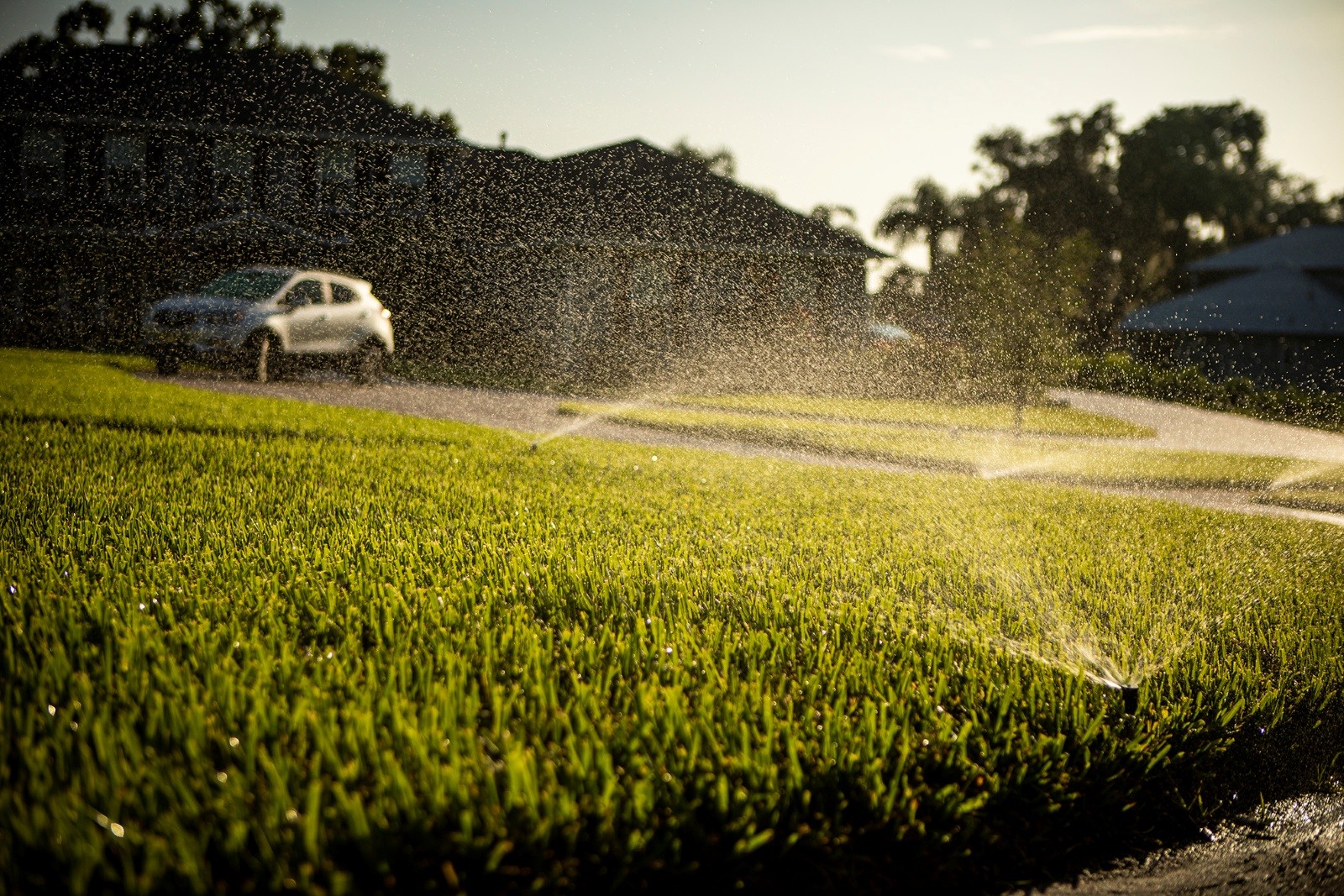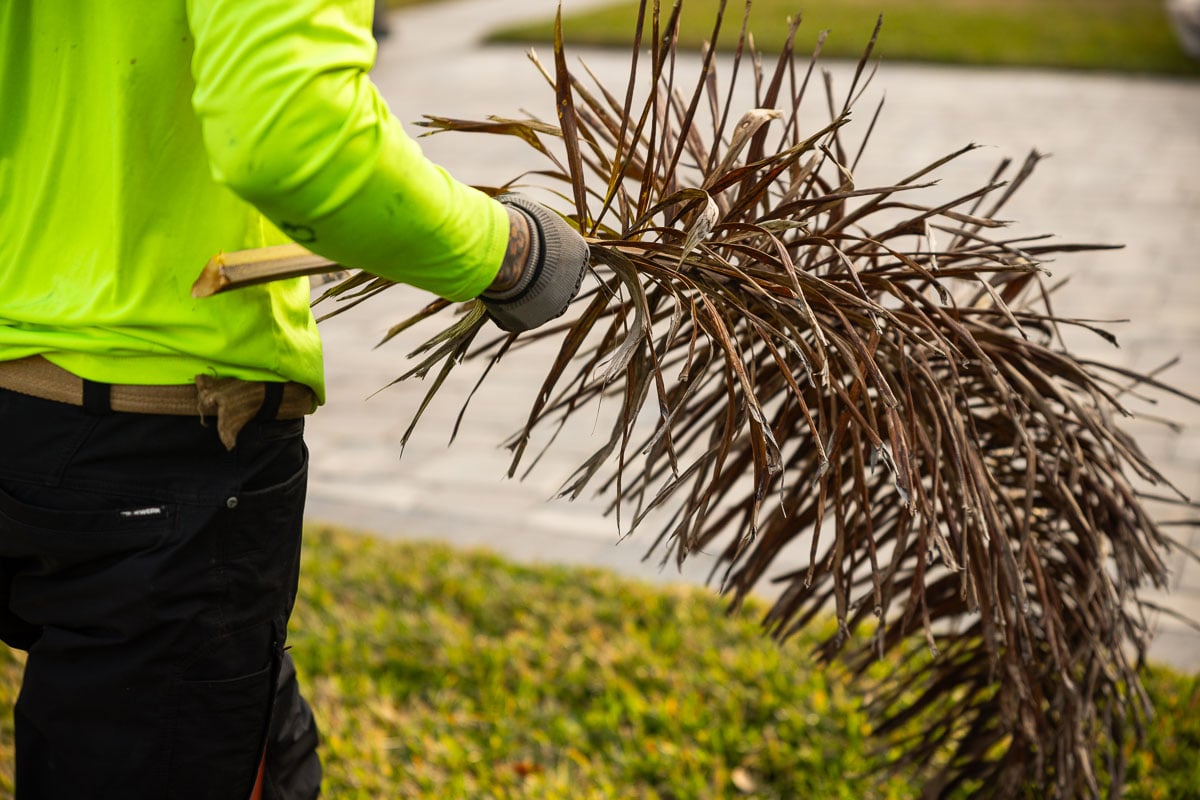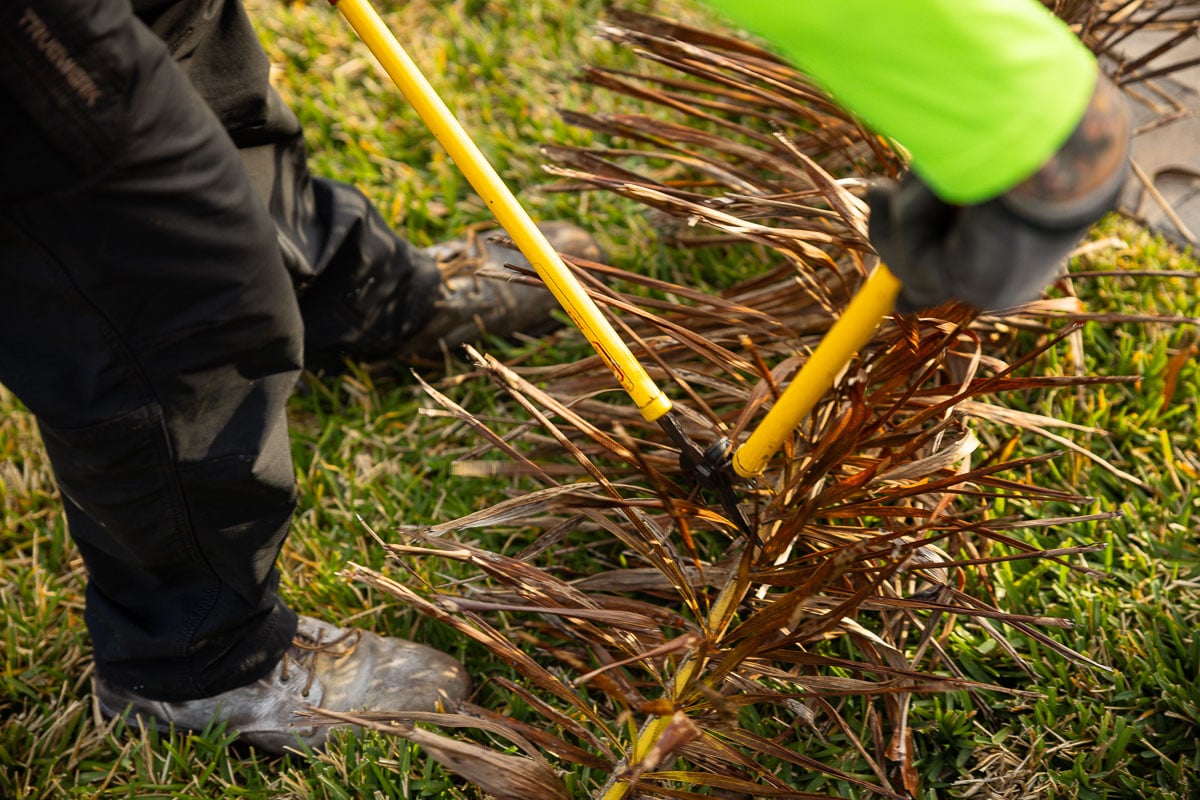If you can’t stop shivering, you better check your outdoor plants. They might be too chilly, too.
The low winter temperature here in Orlando ranges from 30 to 35 degrees — plenty cold enough to damage vulnerable tropical plants.
One frosty night last winter plunged Orlando into the 20s, and we get multiple days each year below 35 degrees.
Let’s learn more about preparing tropical plants for winter, including:
- What Plants Need to Be Covered in Freeze in Florida?
- How to Cover Tropical Plants in Winter?
- Offer a Toasty Blanket of Mulch for Cold Weather Plant Protection
- Protecting Tropical Plants for Winter: Water Before a Freeze
- Time Your Fertilizer To Protect Tropical Plants from Frost
- Don’t Prune Frost-damaged Plants Too Quickly
Plants used to toasty tropical weather aren’t crazy about sudden cold snaps that jar them out of their warm routine.

How to protect tropical plants in winter? Cover them — frost blankets are designed to keep plants toasty.
Don’t fertilize them too close to winter. Offer a cozy blanket of mulch. And don’t be too quick to prune off frost damage — it makes plants vulnerable to future frosts.
First, What Plants Need to Be Covered in Freeze in Florida?
Just because this is Florida doesn't mean every variety of palm tree loves it here.
Some varieties, like Royal, Traveler's, or Coconut palms will likely die here in Central Florida if we get a bad frost or freeze.
The Foxtail palm is slightly cold-sensitive, too. And here’s some irony— the Christmas palm isn’t crazy about cold, either.
Play it safe and check with a Central Florida landscape designer before you splurge on a palm.

Many plants will freeze in Central Florida, from tropical plants like bougainvillea, crotons, and hibiscus to herbs in your vegetable garden and tender flowering annuals.
Where in the Orlando area you live plays a factor, too.
People in northern communities like Lake Mary or Sanford have different growing conditions than those who live south in Kissimmee or St. Cloud.
Your cousin across town might get a plant-killing frost, while your backyard plant pals are fine.
How to Cover Tropical Plants in Winter?
Pretend you’re chilly, and your feet are freezing. What do you do? Cover up.
The same goes for your frost-fragile plants.
Grab a sheet or blanket and tuck in those plants like a shivering toddler.
Frost blankets designed for this task offer a few more degrees of tropical plant protection over a plain blanket.
Cover the entire plant down to the ground to help trap the warmth. Tuck the blanket snugly around the plant, then use heavy rocks or bricks to weigh the bottom so the wind doesn’t dislodge it.
Here are a couple more tropical plant protection tips:
- Don’t leave plants covered for more than two or three days. They need sunlight, air and water. Cold snaps don’t last long here in Central Florida, so there is no need to keep plants covered for very long.
- Don’t use plastic tarps or sheets to cover plants. It’s not breathable and can actually kill your plants.
Potted plants? That’s easy. Bring them inside or move them to a protected area like a shed or garage.
Offer a Toasty Blanket of Mulch for Cold Weather Plant Protection
Maybe you think of mulch as a summer multi-tasker, keeping weeds at bay, conserving precious water and adding nutrients to your soil.
But mulch is a winter wonder, too. A 3-5 inch layer of the toasty stuff can help keep the soil temperature consistent and prevent it from freezing solid.

Give your plants a fresh layer in late fall for tropical plant protection through the winter.
Protecting Tropical Plants for Winter: Water Before a Freeze
Watering vulnerable plants before a freeze might seem weird — won’t the water freeze?
Wet soil can protect your plants from cold. It soaks up more heat during the day than dry soil and radiates that heat during colder nights.
Just be sure to water early in the day before you’re expecting frost. That way the wet soil has a chance to soak up heat from the day.
Time Your Fertilizer To Protect Tropical Plants from Frost
Maybe you skipped a few fertilizer applications and want to get one good dose in before winter. Hold that thought.
If you fertilize too late in the fall, your grateful plant will send out tender new growth that is more susceptible to cold.
That’s bad. Try not to skip that spring and summer fertilizing. Healthy, well-fed plants will stand up to cold temperatures better and recover from injury faster.
Tempted to Prune Frost-damaged Plants? Don’t
Plants damaged by frost don’t look great. But don’t rush out to prune any damaged parts of your plants until you’re sure no more cold weather is coming.
Those newly pruned plants will be extra vulnerable to frost damage the next time.
Get Advice on Tropical Plant Protection from Ground Source
Regarding planting and plant care in Central Florida, it’s wise to consult the pros, who can suggest the best plant choices for your area.
Will Croton survive a sudden cold snap in your yard? Should you risk a dwarf palm?
We’re landscape experts, and we’ll be with you every step of the way as you plan your perfect outdoor space.
Sod, irrigation, landscape design: let us transform your yard into a place you spend every spare minute.
Are you ready to enjoy the vibrant, impressive yard you've always wanted? Request a quote today! We’ll help you review your options and then transform your property.







